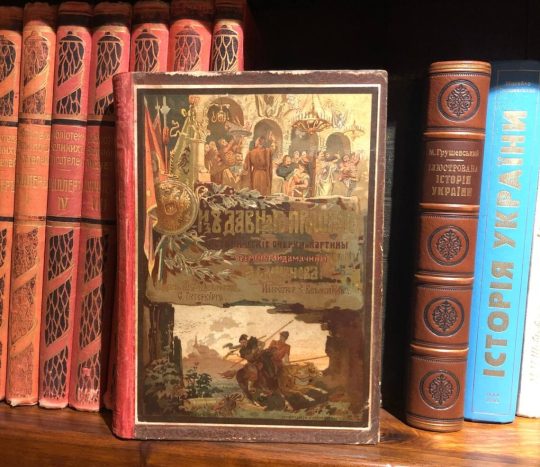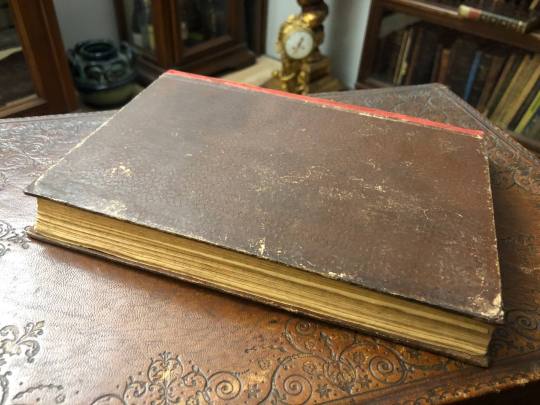Text

The antique book "From the ancient past. Historical sketches and paintings of the times of the Haidamaks" is of interest to collectors and lovers of the history of Ukraine. This is a lifetime edition of 1890, published in St. Petersburg in the publishing house of A.F. Devrien.

From the ancient past. Historical sketches and paintings of the times of the Haidamaks
#ukrainian history#ukrainians#Haidamaks#book review#antique books#books#books & libraries#Kobzar Library
56 notes
·
View notes
Text
Jews in Shargorod, Vinnytsia region, Ukraine
https://bit.ly/3gSoryd - online burials catalog.

Shargorod is the center of the district of the same name, located 90 km from Vinnytsia. The settlement appeared here at the end of the 15th century. In the 16th century, the Polish king Stephen Báthory ordered to build a castle on the site of the settlement. In 1588, the city received the Magdeburg Law.A year later, a synagogue was built in the city, which became part of Shargorod's fortifications. Its wall was moved forward beyond the line of defense. In 1595, thanks to the synagogue, the Jewish population managed to survive the attack of the Cossacks. During the Turkish rule in the 1670s and 1690s, the Turks used the synagogue building as a mosque. In the 1930s, the Soviet government transferred the building to one of the local enterprises. In 2012, it was returned to the Jewish community.By the 17th century, Shargorod's Jewish community was one of the largest in the region. It suffered from the pogroms of the Krivonos Cossacks in 1648 and the Haidamaks in 1734. In 1672-1699, the city was under the control of the Ottoman Empire. Immigrants from Turkish lands replenished the Jewish population.Since the beginning of the 18th century, Shargorod has been one of the centers of the spread of Hasidism. One of Besht's disciples served as the local rabbi. Sabbatians and Francoists inhabited the city.In 1793, the settlement came under the control of the Russian Empire. By the end of the 19th century, 3.9 thousand Jews lived here. They owned all the trading establishments, hotels and warehouses of the city.At the beginning of the 20th century, there were nine synagogues in Shargorod, and Jewish educational institutions were operating. In 1926, 2.6 thousand Jews lived here, who constituted 61% of the population. By the 1930s, Jewish schools and synagogues were closed.By 1939, 74% of the local population was Jewish. With the outbreak of the war, local Jews failed to evacuate. In the summer of 1941, the city was occupied. About 1.8 thousand Jews remained in it. Shargorod fell into the Romanian zone of occupation, so Jews brought from other Romanian territories ended up in the local ghetto. As a result, about 7 thousand Jews ended up in the city.The Shargorod ghetto was a unique phenomenon. Its leaders managed to come to an agreement with the authorities. Jews were used in various jobs and did not carry out extermination aktions. The ghetto had its own pharmacy, hospitals, police and a sanitary-epidemiological station. In the winter of 1941-1942, thanks to the efforts of the ghetto leadership, it was possible to contain the spread of the typhus epidemic. 1.4 thousand people died, but most of the prisoners managed to survive.In the early 1990s, there were about 700 Jews in the city.
#mitzvatemet #JewishGenealogy
0 notes
Text
Gemini 2 got the Red Dot Award

It’s rare that MacPawers give up their jeans and sneakers in favor of ties and dress shoes, but that’s exactly what happened on October 27. In glamorous Konzerthaus Berlin, the well-dressed team behind Gemini 2 received their well-deserved Red Dot Award.
Since 1955, Red Dot has existed to reward good design, with its Communication Design category laser-targeting projects that exhibit “clarity and emotion” and “affect the viewer in an emotional and sustainable way.” As people who believe every app — even a supposedly boring utility — should make you feel a tiny bit better, we’re happy Gemini 2 was recognized for that particular effort.

Back to the future, or how Gemini 2 got this way
When we started designing the new version of Gemini, the task seemed daunting, because the bar had been raised pretty high in the past. Gemini was one the Best Apps of 2012 according to Apple, imitated by a few hundred other duplicate finders and loved by users everywhere. So, we fished for ideas in the future.
“My theory was that in 30 years UI design would play with surfaces: nanomaterials, textures, fabrics,” says Dmitry Novikov, Art Director at MacPaw and Gemini’s lead designer. “So I thought, what kind of surface is the most fitting for finding duplicates? That’s how we came up with the one made entirely of duplicated circles.”

Sorting out thousands of files can be soul-crushingly boring, so we wanted to cheer up and reward our users. With a little inspiration from computer games, sci-fi movies, and other nerdy stuff, we came up with an achievement system for Gemini 2. Much like a game, it would have badges, ranks, levels, and experience percentages.

“I think a big idea behind gamification is that every minute of your time is valuable,” says Aleksandr Ageev, the author of the achievements artwork. “You might as well make it fun.”
In the end, it’s all about you
Although it’s flattering to have the recognition of design critics, it’s you — our users — we’re doing this for. And because it’s you who suggest, beta test, and comment, this award is also yours. Thank you for a chance to affect you in an emotional and sustainable way make your Mac life a little happier.
Kudos to everyone who worked on Gemini 2
Anton Mironov
Denis Stas
Alexey Prykhodko
Oleksii Nezhyborets
Serhiy Tatarchuk
Serhiy Buchnev
Serhiy Krivoblotsky
Alexey Pawlowski
Vera Tkachenko
Alex Chirva
Alex Yemelyanov
Dmitriy Novikov
Oleksandr Ageev
Liudmyla Khomiak
Oleh Prokopenko
Pavlo Haidamak
Dmytro Litvenchuk
Roman Tyshchenko
Anatoly Kasyanov
Serhiy Grigoruk
Volodymyr Radchenko
Volodymyr Voronin
Yaroslav Kopylov
Taras Neporozniy
Dmitriy Tereschuk
Ray East
Dmitriy Bilkun
Ivan Kuziv
Sergey Yaremenko
Julia Petryk
Olga Kurylenko
Olga Medikari
Oksana Kizikelova
Alice Kotlyarenko
Pavlo Huk
Roman Tikhonychev
Yevhenii Peteliev
Yevhenii Batsiun
Oksana Vdovychenko
Oleksandr Kosovan
Bogdan Grechanovsky
Andrew Dvoynos
Kate Uglitskikh
Oleksandra Cherniavska
Beta testers of MacPaw
Every human and cat at MacPaw
2 notes
·
View notes
Text
Bolsheviks capture Kiev - archive, 1918
16 February 1918: Little by little the counter-revolutionaries were forced back by artillery and by bayonets A report transmitted through the wireless stations of the Russian Government on February 11, announcing the capture of Kieff by Bolshevik troops, contains the following:– Events at Kieff took the following course. At the time when our troops advanced towards Kieff the workmen and soldiers raised a revolt against the Rada. The revolt was successful from the beginning, but the troops of Petliura, after they were detected near Kruti on January 17, blew up the bridges, thus holding up the advance of our troops, and fell upon those in revolt with overwhelming forces. The arsenal was captured by the Officers’ Training School troops and Haidamak troops. The Military Revolutionary Committee, which was arrested there, was shot, among the victims being also … Gorovich. Continue reading... https://www.theguardian.com/world/2017/feb/16/bolsheviks-capture-kiev-archive-1918?utm_source=dlvr.it&utm_medium=tumblr
0 notes
Photo

Гайдамаки (Haidamaky) The illustriation for the Taras Shevchenko’s poem.
1 note
·
View note
Text

Simon Petliura (1879-1926) was a figure who became a symbol of the Ukrainian liberation movement. Chief Ataman of the UPR Army. Head of the UPR Directorate. The head of the Ukrainian state in its most difficult period.

In 1917, he became one of the national leaders and builders of the Ukrainian army. At the first All-Ukrainian Military Congress, he was elected chairman of the Ukrainian General Military Committee. In the first government of Ukraine, he held the post of Secretary General of Military Affairs.

One of the initiators of the Ukrainianization of the army. During the first Russian-Ukrainian war, he formed the Haidamak Kish of Sloboda Ukraine. During the Hetmanate, he took an active part in the activities of the Ukrainian National Union.
19 notes
·
View notes
Text
Chigirin Kobzar and Haidamaks, Taras Shevchenko

A fragment of a chromolithograph depicting Taras Shevchenko and the second lifetime edition of the poet's collection of works "Chigirin Kobzar and Haidamaks"
#kobzar#ukrainian history#ukrainian#ukraine#Україна#Тарас Шевченко#Кобзар#украинская культура#культурний простір кобзар
5 notes
·
View notes